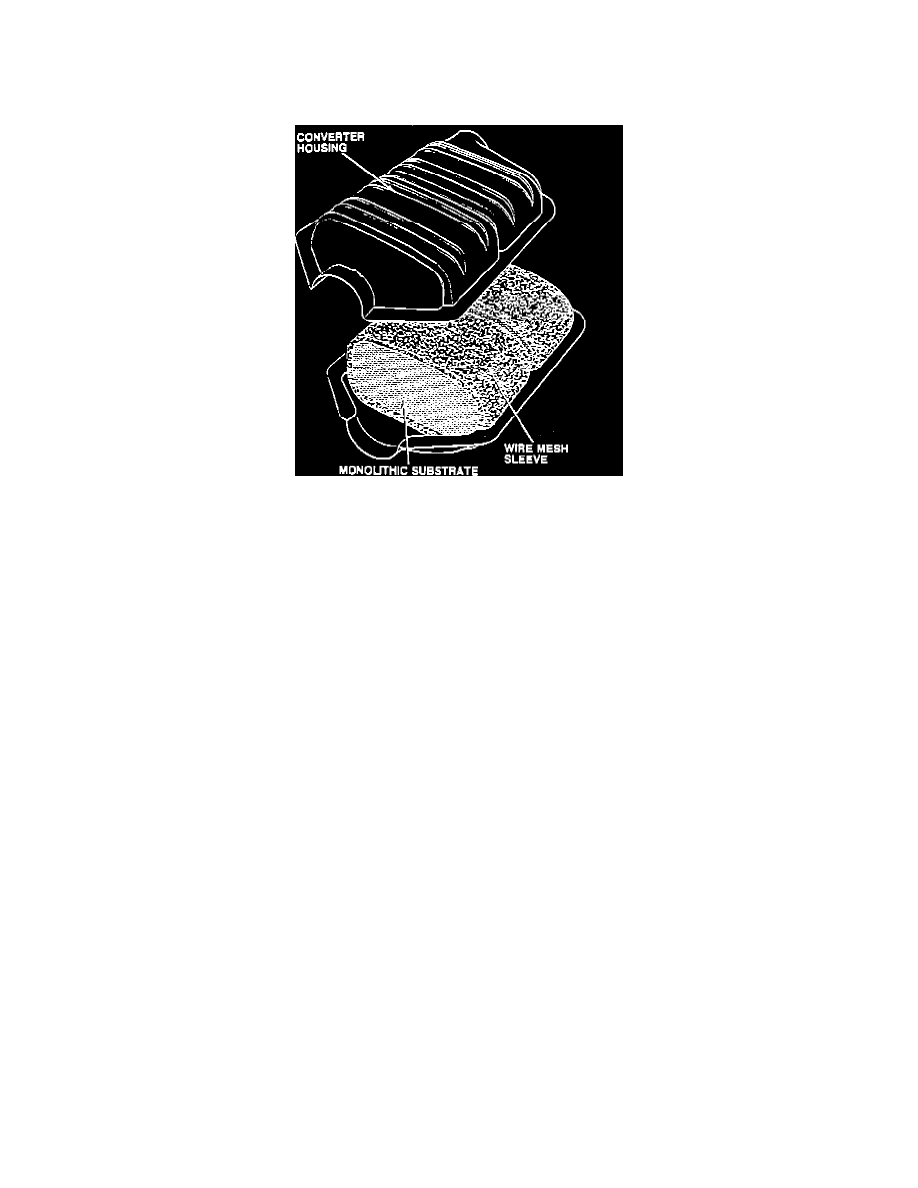Aerostar 2WD V6-183 3.0L (1991)

Catalytic Converter: Description and Operation
The Catalytic Converter is mounted under the vehicles body within the exhaust system, and is designed to convert harmful exhaust gas pollutants,
Carbon Monoxide (CO), Hydrocarbons (HC), and Oxides of Nitrogen (NOx) to harmless by-products of Nitrogen (N), Carbon Dioxide (CO2) and water
vapor (H2O) through a catalytic chemical reaction.
Single Brick Catalytic Converter
Two types of converters in use today are the Conventional Oxidation Converter (COC) and Oxidation-Reduction Converter. Both consists of two
stamped aluminum or stainless steel pieces welded together to form a round or oval housing.
Oval-type converters contain tiny pellets that are impregnated with the catalyzing element(s). Although this type of converter is known to create a fair
amount of exhaust restriction, it is less expensive to manufacture and in some vehicle models contaminated pellets may be replaced.
The round-type converter contains one or more ceramic monolithic honeycomb substrates. The substrate bricks or beds are impregnated with the
catalyzing element(s), then covered by a wire mesh sleeve for insulation and protection from shock and severe jolts. A diffuser inside the shell allows the
exhaust gases to flow uniformly over the entire area of the substrate.
THE OXIDATION REACTION
In order to change HC and CO into harmless materials, the catalytic elements (platinum and palladium) start an oxidation, or burning, reaction in the
catalytic converter. Oxidation is the addition of oxygen to an element or compound. If there is not already enough oxygen in the exhaust, a secondary air
supply system is incorporated into the vehicle's design for additional air injection. During the oxidation process, Oxygen (O2) mixes with the excess HC
and CO to form H2O and CO2.
During the oxidation reaction process, considerable heat (900~F to 1,600~F) is generated. Caution should be taken while working on or around the
catalytic converter and other exhaust system components.
THE REDUCTION REACTION
Reduction is the opposite of oxidation, or the chemical removal of oxygen from a material. The reduction reaction changes NOx to harmless nitrogen (N)
and (CO2) by chemically moving the oxygen from the NOx compound to the CO compound. The catalytic elements required for the reduction process
are platinum and rhodium.
The Three-Way Catalytic Converter (TWC) is designed to reduce all three exhaust pollutants, but works best to reduce NOx when the CO level of the
exhaust is between 0.8 and 1.5 percent. As the CO level increases or decreases from that percentage, the 3-way converters efficiency decreases. Exhaust
gas first passes through the catalyst, where NOx is reduced to N2 and CO2; then through the catalyst where HC and CO are changed to H2O and CO2.
The Light-Off Catalytic Converter (LOC) is a single bed oxidation-type converter, and is mounted to the exhaust manifold ahead of the main converter.
The LOC primarily used in controlling HC and CO emissions during cold engine warm-up, while the main converter has not yet reached operating
temperature. Heat from the exhaust manifold rapidly warms the LOC in order to start the Oxidation Process, which is then continued at the main
converter.
The Light-Off Catalytic Converter is also referred to as a Pre-Cat or a Mini-Cat by other vehicle manufacturers.
